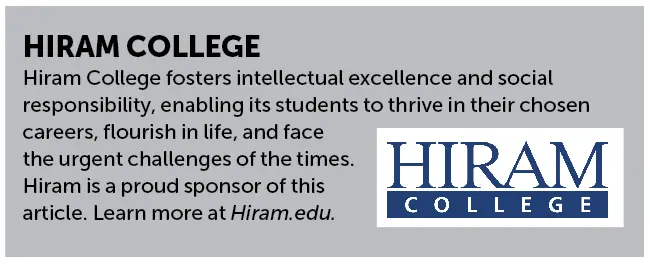Colleges come in all shapes and sizes, but small liberal arts colleges offer some distinct benefits for students. We caught up with Dr. Robert Haak, vice president and dean at Ohio’s Hiram College, to find out why.

Take a Closer Look at Small Liberal Arts Universities
1. They’re focused on undergraduate education (and all classes are taught by professors)
Universities educate both undergraduate and graduate students, whereas small liberal arts colleges focus more on undergraduate students. Professors, not graduate students, teach the classes, and they get to know the needs of their students.
2. Students get a lot of attention
[adrotate banner=”45″]According to research by US News and World Report, the typical small college has a student-to-faculty ratio of under 10:1. About two-thirds of classes enroll less than 20 students and almost none have more than 50. By comparison, students at major research universities are often in classes with several hundred other students, especially in their freshman and sophomore years.
“We have small class sizes, so it’s hard for a student to get lost,” says Haak. “And we do pay attention.” At Hiram, which enrolls around 1,100 students, those who are struggling academically receive special attention. “If we see a student is headed for trouble, we have teams of faculty and staff that follow up,” notes Haak. That won’t happen at a big university.
3. They’re more hands-on
There are plenty of research and other extracurricular academic opportunities at big universities, but students don’t always take advantage. And they’re certainly not required to. Not so at many small universities, where engaging students in such opportunities is often part of the curriculum. “At Hiram, we require students to either study abroad, participate in a faculty-student research program, or do an internship,” explains Haak. “All students participate in an out-of-classroom experience.”
4. A liberal arts curriculum
As you’d expect, small, liberal arts universities are dedicated to a liberal arts education, which experts say prepares students broadly for whatever career they pursue. “Businesses want liberal arts students because they can think and adapt,” says Haak, noting that because of the changing nature of the workplace, students graduating today can expect to have many different careers, some of which don’t even exist yet.
5. Higher graduation rates
Thanks to the extra attention students receive, the best small liberal arts colleges boast far better graduation rates than their big-university peers. “Our graduation rate at four years is higher than most public universities at six years,” notes Haak.
6. Extra help for first-generation and low-income students


“Say you tell a student to go to the registrar’s office,” explains Haak. “If you’re a first-generation student, you may not have any idea what a registrar is. We try to be conscious of those issues and are as user friendly as we can be.”




